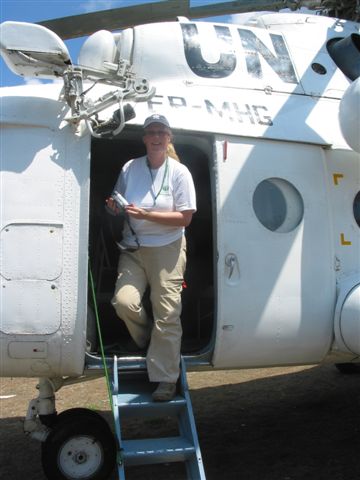We saw the pictures, and we heard the tales of personal heartache The Tsunami swept over Asia leaving devastation in its trail. Images from North Indonesia were beyond imagination, and one cannot phantom how it must have been to be an eyewitness. As our plane touch down in Meulaboh, almost one month has passed, and I was not exactly sure what I would find.
Meulaboh is a town on the east coast south of Banda Aceh. It was here Adventist Development Relief Agency – ADRA, concentrated its relief work. With many international Aid organisations present, work was divided up so the people effected by the Disaster would be served best.
ADRA’s focused on organizing cleaning of the schools as well as water and sanitation. Now cleaning a school might not seem all that important, but when I saw the mud, the debris, the lack of walls I understood. For the children it was vital to return to some sort of normality, to get back into a familiar routine that will enable them to think of other matters than the devastating trauma they lived through.
What I encountered was a devastating time, chaos and tragedy on so many levels.
It was a traumatic time for so many, and an uncertain time continual weekly earthquakes, civil unrest in the region that could develop into civil war . It became a routing to sleep with your shoes, passport and a bottle of water next to your bed, so you could escape quick should another disaster occur. Easy to forget as I once found myself outside our building with shoes, but no passport and no phone. Made me realise, just how vulnerable you can be, with no identification papers and no way of contacting your loved ones; keeping phone numbers memorised is an art long forgotten.
Bringing aid to 1000s of people in the middle of disaster zone, was challenging with roads washed away and runways with huge cracks in the surface made aid a challenge. Amidst all the work of logistics, transport, planning and negotiations, and NGO meetings, I found people had a need to share their stories, to hear what they had experiences, both of tragedy and miracles, to sit and listen to how survivors survived, and whom they had lost.
To sit with Mahmoud on the remains of his 2 story house, to hear how he lost his entire family; listen to how 3 months after the Tsunami, a father still wanders around among debris, looking for his 17 year old son. Learning that a principles wife had given birth on top of a slanted roof in the midst of the tsunami and they all survived; How Nursina a short frail looking 75 year old woman held on to the leaves of a palm tree, for hours as the waves were roaring under her feet, or how Yasminna, a mother saw her baby being snatched away from her arms and washed away by the tidal wave. The stories and people broke my heart.
When I returned to England I was quiet, for how do you speak of what you have seen and heard? All I wanted to do was being held in my husband’s arms. Home safely.
In the past 10 years the region have experienced peace and a rebuilding of the towns, and I wonder, where are Mahmoud, Nursina, Yasmina and the others now. How did the kids in the school I visited, turn out? How was the last 10 years for them. Bricks and mortar aside, it’s the people who’s life was torn apart that broke your heart and left a lasting impression.

No Comments Yet